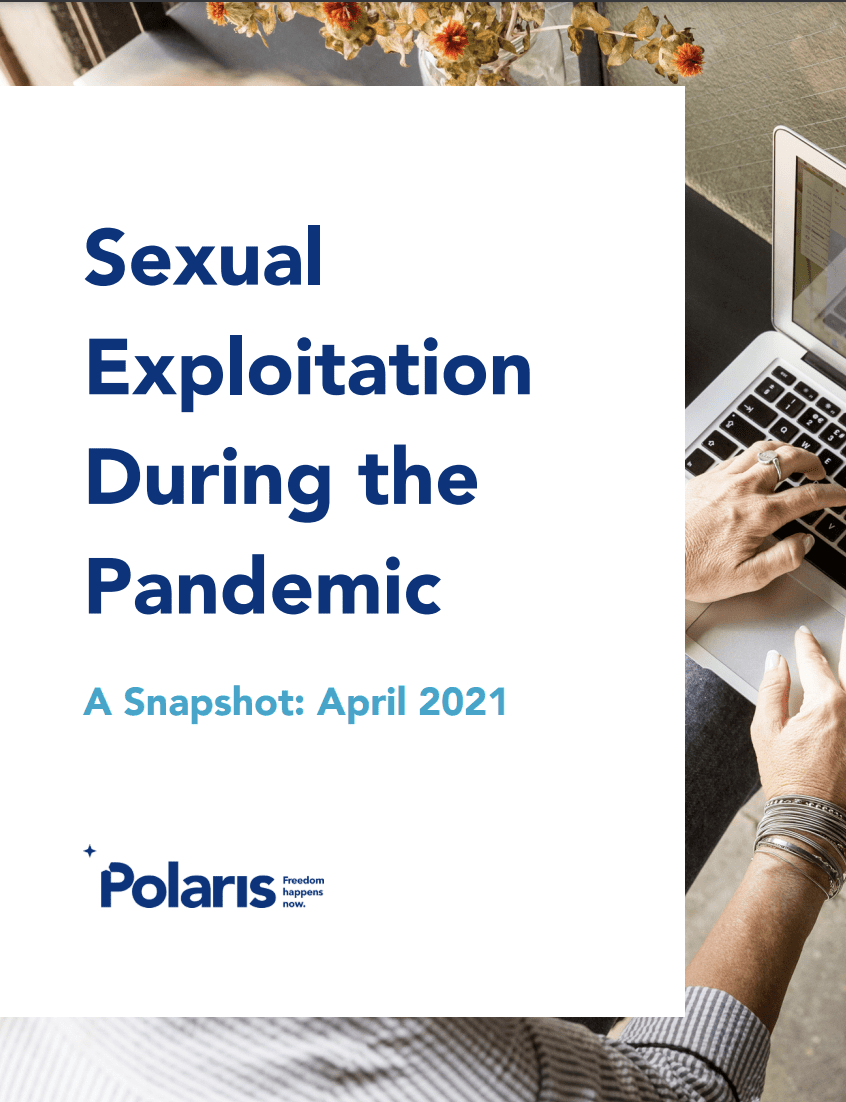
Sexual Exploitation During the Pandemic
Background
Over the last year, Polaris examined data from the U.S. National Human Trafficking Hotline to determine the potential impact of the COVID19 pandemic on human trafficking in the United States. Daily numbers of trafficking situations in various categories in the different pre-shelterin-place periods were compared with the post-shelter-in-place period. In addition, differences in the demographics and other characteristics of situations as well as signalers were examined (see box below).
It is important to note the limitations of this analysis. First, this is an exploration of correlation and not causation, meaning that the findings are not proof that the changes are caused by the COVID-19 pandemic. Next, the Trafficking Hotline exists to assist victims and survivors of human trafficking, and data is gathered only for the purpose of providing that assistance; therefore, every caller is not asked the exact same questions, contributing to the possible measurement variation.
This brief is the second in a planned series presenting timely analysis and evidence to guide efforts to respond to emerging needs as a result of the COVID-19 pandemic.
Time Periods
The analysis compares a six-month post-shelter-in-place period to two deliberately chosen pre-shelter-in-place periods, based on the orders to stay home on March 15th in San Francisco, CA. By March 30th, most states that eventually enacted a shelter in place order had done so. Independent sample t-tests were used to examine if differences between two time periods are likely to represent an actual difference rather than one that arose as a result of chance variations. In this analysis, significant findings were noted if differences against both time pre-shelter-in-place periods were significant at p<0.05 levels (a standard level used in social science research, indicating a less than 5 percent probability that the difference is due to chance). Chi-square statistics were also used to examine for significant differences in the proportions of situations and signalers of trafficking of certain characteristics.
Read more here.
